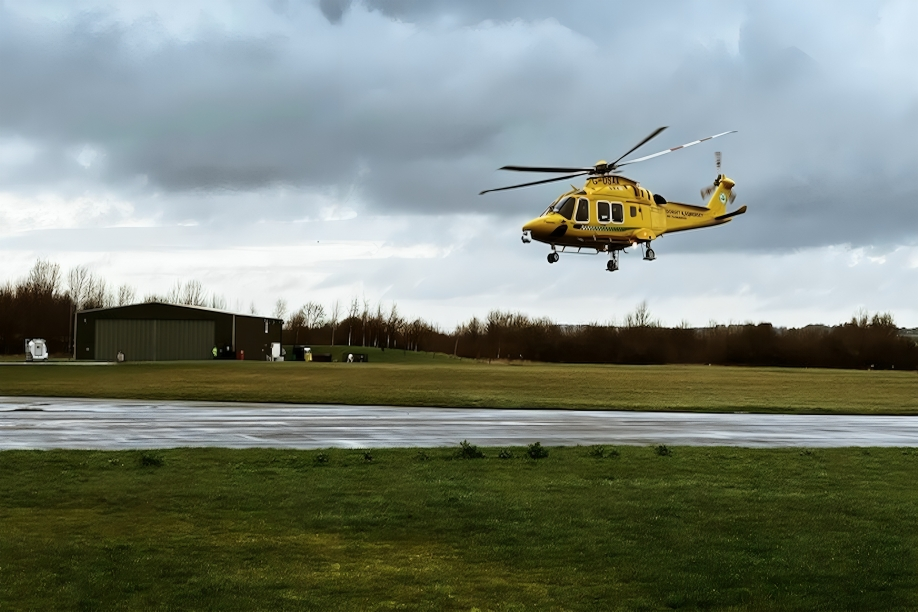Helicopters are fascinating machines that serve a variety of roles, from emergency rescue missions to luxurious private travel. They have become an essential part of modern aviation, offering flexibility and access to places that fixed-wing aircraft can’t reach. Whether you’re a helicopter enthusiast, a budding pilot, or simply curious about aviation, understanding the different types of helicopters can help you appreciate their unique designs and functions. In this post, we’ll take a closer look at some of the top helicopter types you need to know.
1. Single-Rotor Helicopters
Single-rotor helicopters are the most common and widely recognized type. They feature a single main rotor that generates lift and thrust, as well as a tail rotor to counteract the torque generated by the main rotor. This design makes them incredibly versatile, efficient, and easy to maneuver. Most of the helicopters you see in everyday life—whether they’re being used for medical evacuations, news coverage, or corporate transport—are single-rotor models.
Popular Example: Bell 206
The Bell 206 is a classic single-rotor helicopter that has been in service since the 1960s. It’s known for its reliability, affordability, and ease of maintenance, making it a popular choice for everything from commercial flights to law enforcement.
2. Multi-Rotor Helicopters
While single-rotor helicopters dominate the skies, multi-rotor helicopters, particularly drones, are gaining traction in the modern world. These helicopters use multiple rotors to generate lift, usually in a symmetrical or quadcopter configuration. Multi-rotor helicopters are ideal for stability and precision, which is why they are often used in aerial photography, surveying, and other specialized tasks. However, they generally have lower payload capacities and shorter flight ranges compared to single-rotor designs.
Popular Example: Quadcopter Drone
Quadcopters, like the DJI Phantom series, have revolutionized the drone industry, providing smooth, stable flight for both hobbyists and professionals. Though not exactly “traditional” helicopters, their multi-rotor design shares similar principles.
3. Tandem Rotor Helicopters
Tandem rotor helicopters are equipped with two large rotors mounted in a front-and-back configuration. Both rotors spin in opposite directions to eliminate torque, negating the need for a tail rotor. This design is generally used for heavy-lift transport because it provides greater lift capacity and stability, especially in demanding conditions. Due to their large size and design, tandem-rotor helicopters are often used in military operations or for transporting oversized cargo.
Popular Example: Sikorsky CH-47 Chinook
The Sikorsky CH-47 Chinook is one of the most recognizable tandem-rotor helicopters in the world. It’s known for its ability to carry heavy loads, such as military equipment, tanks, or disaster relief supplies. The Chinook has been used in both military and civilian operations since the 1960s.
4. Coaxial Rotor Helicopters
Coaxial rotor helicopters feature two rotors that are stacked one above the other, spinning in opposite directions. This design eliminates the need for a tail rotor and allows for greater maneuverability and more power in a smaller package. Coaxial rotor systems are typically used in compact, high-performance helicopters, making them ideal for use in tight spaces or urban environments.
Popular Example: Kamov Ka-50
The Kamov Ka-50 is a Russian military helicopter that boasts a coaxial rotor system. This configuration gives the Ka-50 superior handling and agility, making it highly effective in combat situations. The helicopter is well-known for its speed, stability, and reduced vulnerability to damage.
5. Tiltrotor Helicopters
Tiltrotor helicopters are a hybrid between a helicopter and a fixed-wing aircraft. These innovative machines have rotors that can tilt, allowing them to take off and land like a helicopter but cruise at higher speeds like an airplane. Tiltrotor helicopters offer the best of both worlds, making them ideal for both military and civilian uses that require speed and vertical takeoff and landing (VTOL) capabilities.
Popular Example: Bell Boeing V-22 Osprey
The Bell Boeing V-22 Osprey is perhaps the most famous tiltrotor helicopter in operation today. The U.S. military primarily uses it for troop deployment and heavy cargo transport. The Osprey’s ability to tilt its rotors and transition from helicopter mode to airplane mode makes it a versatile and high-performance aircraft.
6. Autogyros (Gyrocopters)
Autogyros, also known as gyrocopters, are a unique class of rotorcraft that differ from traditional helicopters. Instead of powered rotors, autogyros rely on an unpowered rotor that spins due to airflow generated by forward motion. This means that autogyros cannot hover, but they excel at efficient, low-speed flight and are often used for personal aviation, aerial surveying, and light cargo transport.
Popular Example: MTO Sport
The MTO Sport is a well-known autogyro that offers excellent maneuverability and versatility for recreational pilots. Its open cockpit design and small, lightweight frame make it perfect for hobbyists looking to explore the skies at low altitudes.
7. Heavy-Lift Helicopters
Heavy-lift helicopters are designed to transport large, heavy payloads that other helicopters can’t handle. These helicopters often feature specialized modifications to their rotors, engines, and structure to increase lift capacity and ensure safety when lifting massive loads. Heavy-lift helicopters are indispensable for industries like construction, oil and gas, and military operations, where transporting bulky equipment is a routine task.
Popular Example: Sikorsky CH-53 King Stallion
The Sikorsky CH-53 King Stallion is a military-grade heavy-lift helicopter capable of lifting payloads exceeding 20 tons. It’s used extensively by the U.S. Marine Corps for transporting vehicles, artillery, and supplies to remote locations.
In Conclusion
Helicopters come in many shapes and sizes, each designed for specific tasks and industries. From the iconic single-rotor helicopters used for commuting to the increasingly popular multi-rotor drones in the skies, to the large tandem-rotor helicopters utilized in military operations, there’s a helicopter model suited to nearly every need. Gaining an understanding of these diverse helicopter types can open up exciting opportunities for aviation enthusiasts and professionals.
Each design brings its own unique set of benefits, making them essential for both civilian and military purposes. If you’re interested in learning more about these dynamic machines, enrolling in a helicopter flight school in Tulsa, OK, could be your first step toward a thrilling career in aviation.

